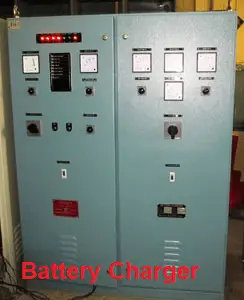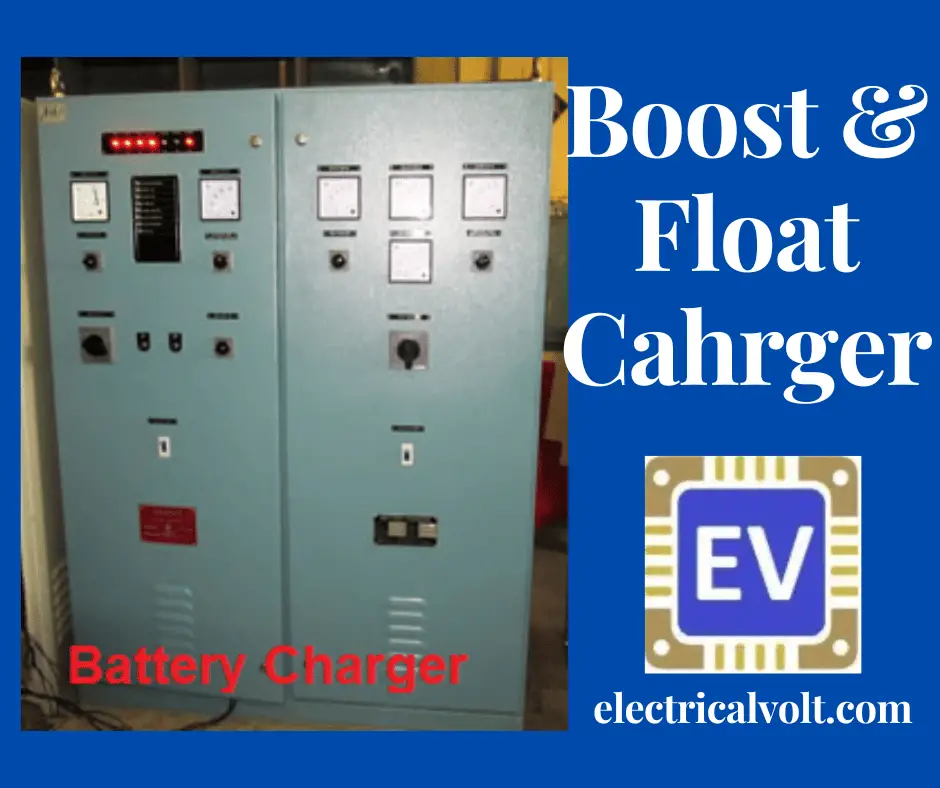In this article, we will discuss the difference between a float charger and a boost charger. The boost charger quickly charges the battery. On the other hand, the float charger slowly charges the battery to maintain the battery terminal voltage. Generally, the battery charger unit has a separate boost charger and a float charger of different ratings. However, the new battery chargers function on SMPS technology and have a single unit charger that functions as a boost cum float charging.

Now, we will discuss the features of the boost charger and float charger in detail.
Boost Charger
- In the boost battery charging process, the charging voltage is above the normal float setting voltage. Therefore, the battery draws more current in boost charging.
- The boost charger has a separate transformer and rectifier unit of a higher current rating.
- The boost charger charges the batteries faster. This charging option is suitable when the battery needs charging just after discharge. When the battery discharges, its terminal voltage falls. The battery charges at a faster rate on the application of boost voltage.
- The boost charger charges the battery after the battery gets exhausted on delivering power to the load when the AC mains fail.
- Boost voltage increases the battery charging current. However, the increased charging current causes a voltage drop in the battery’s internal resistance. Therefore, there is a need to adjust the boost voltage after dropping the battery charging current.
- When the battery is fully charged, the charger voltage must be lowered to the correct float voltage. If the battery remains on the boost charging for a longer period, then the battery overcharges and is apt to fail.
- There are chances of overcharging the battery in the boost charging mode.
- During boost charging, the exhaust fans of the battery room must be in operation because heat and gas generation are more when the battery quickly charges on boost.
- Once the battery is fully charged, the battery charging can be switched over to float charging.
Float Charger
- The battery is put on the float charging mode only after attaining the correct float voltage.
- The float charging maintains the battery voltage. The charger supplies the minimum current to the battery to maintain its terminal voltage. The float charger charges the battery at a similar charging rate to the battery discharge rate. Thus, the float charger maintains the battery voltage.
- The float voltage is much less than the boost voltage.
- The float charger slowly charges the battery to maintain its voltage.
- The float charger takes care of the self-discharging of the battery due to its internal resistance.
- When the voltage of the float charger and battery become equal, the charging current becomes equal to zero. If the battery voltage lowers, the float charger starts charging the battery again. The charging current depends on the difference between the charger output voltage and the battery terminal voltage.
- The float charger releases the current when the battery voltage falls and ceases the current when the battery potential equals the charger voltage. Thus, the float charger trickles the battery to maintain battery voltage.
- There is no possibility of overcharging the battery in float charging mode.
- The float charger has a separate transformer and rectifier of a lower rating as compared to the boost charger.

Related Articles: